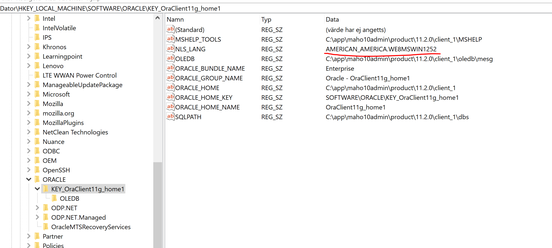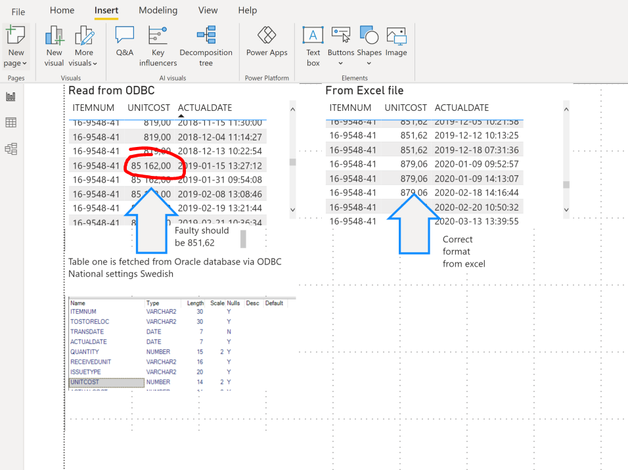- Power BI forums
- Updates
- News & Announcements
- Get Help with Power BI
- Desktop
- Service
- Report Server
- Power Query
- Mobile Apps
- Developer
- DAX Commands and Tips
- Custom Visuals Development Discussion
- Health and Life Sciences
- Power BI Spanish forums
- Translated Spanish Desktop
- Power Platform Integration - Better Together!
- Power Platform Integrations (Read-only)
- Power Platform and Dynamics 365 Integrations (Read-only)
- Training and Consulting
- Instructor Led Training
- Dashboard in a Day for Women, by Women
- Galleries
- Community Connections & How-To Videos
- COVID-19 Data Stories Gallery
- Themes Gallery
- Data Stories Gallery
- R Script Showcase
- Webinars and Video Gallery
- Quick Measures Gallery
- 2021 MSBizAppsSummit Gallery
- 2020 MSBizAppsSummit Gallery
- 2019 MSBizAppsSummit Gallery
- Events
- Ideas
- Custom Visuals Ideas
- Issues
- Issues
- Events
- Upcoming Events
- Community Blog
- Power BI Community Blog
- Custom Visuals Community Blog
- Community Support
- Community Accounts & Registration
- Using the Community
- Community Feedback
Register now to learn Fabric in free live sessions led by the best Microsoft experts. From Apr 16 to May 9, in English and Spanish.
- Power BI forums
- Forums
- Get Help with Power BI
- Desktop
- How to import values with decimals from database
- Subscribe to RSS Feed
- Mark Topic as New
- Mark Topic as Read
- Float this Topic for Current User
- Bookmark
- Subscribe
- Printer Friendly Page
- Mark as New
- Bookmark
- Subscribe
- Mute
- Subscribe to RSS Feed
- Permalink
- Report Inappropriate Content
How to import values with decimals from database
I have problem to import values (number) with two decimals from oracle database, the decimals sign (,) is not included in the value when I import via ODBC, but if I export to an excel file first and then to Power BI, the decimal sign is in correct place.
Using ODBC from Oracle DB:
Export from Oracle to excel and then import to Power BI
Declaration in Database
The correct value should be 879,06, but I don't want to go throught an excelfile, because it is a huge amount of data.
Can someone help me with this issue?
Solved! Go to Solution.
- Mark as New
- Bookmark
- Subscribe
- Mute
- Subscribe to RSS Feed
- Permalink
- Report Inappropriate Content
I finally solved this issue with, I fetch the data from an Oracle database with American setup, so I had to do following steps
1. Change NLS Language in Regedit to American (see picture), then restart computer
2. Change the Regional settings on the Computer, then restart again.
3. Check PowerBI settings to make sure it fetch from windows settings
4. Finally restart PowerBI.
Now I got the result for numeric values for example like this
1,253.69 ( , = thousand separator and . = decimal separator) this works for me now I get all decimals and the calculation is correct.
I hope this will help anyone who has the same problem, I strugled with this for a while.
- Mark as New
- Bookmark
- Subscribe
- Mute
- Subscribe to RSS Feed
- Permalink
- Report Inappropriate Content
The comma vs period is a common issue between data sources. I had a similar issue (missing the decimal after import). The easiest way I found to fix the format after import is by the following:
In the Power Query Editor,
> Select the target column (verify that it is in decimal number format)
> Select the Transform ribbon
> Select "Standard" in the "Number Column" section
> Select "Divide"
> Enter "100" into the pop-up window "value" field
This divides the imported value by 100 thus moving the decimal two places to the left.
If you only need to move one decimal place, divide by 10 - three decimal places would be divided by 1000.
Basically, for ever zero after the one, you are moving the decimal one place.
Hope that helps!
Sabrina
- Mark as New
- Bookmark
- Subscribe
- Mute
- Subscribe to RSS Feed
- Permalink
- Report Inappropriate Content
I finally solved this issue with, I fetch the data from an Oracle database with American setup, so I had to do following steps
1. Change NLS Language in Regedit to American (see picture), then restart computer
2. Change the Regional settings on the Computer, then restart again.
3. Check PowerBI settings to make sure it fetch from windows settings
4. Finally restart PowerBI.
Now I got the result for numeric values for example like this
1,253.69 ( , = thousand separator and . = decimal separator) this works for me now I get all decimals and the calculation is correct.
I hope this will help anyone who has the same problem, I strugled with this for a while.
- Mark as New
- Bookmark
- Subscribe
- Mute
- Subscribe to RSS Feed
- Permalink
- Report Inappropriate Content
Hi Sabrina,
Thanks' for trying to help me, this is still an issue for me and I have spent so much time to try to solve it.
The problem is that the decimals is removed (Swedish decimal ",") in the number.
In the oracle database, it could look like below table, it is a number field 14 + 2 decimals, sometimes it is decimals and sometimes not, so it is not possible to divide all data with 100.
I have also tried other national settings but my problem remain.
Kindly Marianne
- Mark as New
- Bookmark
- Subscribe
- Mute
- Subscribe to RSS Feed
- Permalink
- Report Inappropriate Content
decimal is a dot not a ','
a ',' denotes seperation before the decimal. So this is a number with that seperation and a decimal: 896,352.25
I would suggest manipulating the data on import before PBI categorises it (e.g. in the SQL code) or change it in the source data.
Many Thanks
POC
- Mark as New
- Bookmark
- Subscribe
- Mute
- Subscribe to RSS Feed
- Permalink
- Report Inappropriate Content
So what is the differens here, it's no problem to get the value from the database in other tools Qlikview (BI) and Excel, but when I import to Power Bi it jus remove the "," sign and add it in the end instead, I can not understand why, and it is a huge database with all Costs in this format.
I just want Power BI to fetch the data as is in Table, no conversions.
- Mark as New
- Bookmark
- Subscribe
- Mute
- Subscribe to RSS Feed
- Permalink
- Report Inappropriate Content
Hi,
What I have understood from your query that you need to format the number (123,456.00) instead of looking as (123456.00). If this is the case then I would recommend to format the number using Column/Measure properties in Power BI, instead of formatting it in Power Query. Power Query is primarily meant for data transformation/editing. The data formatting (how it is going to look in the visuals) is done at Power BI desktop.
Regards,
Vivek
- Mark as New
- Bookmark
- Subscribe
- Mute
- Subscribe to RSS Feed
- Permalink
- Report Inappropriate Content
Hello @Maho
Did it solve your issue?
If yes, then please mark this question as answered. Answered questions help users in the future who may have the same issue or question quickly find a resolution via search.
Thanks!
Vivek
- Mark as New
- Bookmark
- Subscribe
- Mute
- Subscribe to RSS Feed
- Permalink
- Report Inappropriate Content
Hi @vivek
No, it is not solved. I think I need to try another explanation.
Ín the database the value is 879,06 Euro, so around 879 Euro
After import to Power BI the cost is 87906 Euro, correct should be 879,06 Euro
Why does Power BI import remove the ","
- Mark as New
- Bookmark
- Subscribe
- Mute
- Subscribe to RSS Feed
- Permalink
- Report Inappropriate Content
Vivek
- Mark as New
- Bookmark
- Subscribe
- Mute
- Subscribe to RSS Feed
- Permalink
- Report Inappropriate Content
- Mark as New
- Bookmark
- Subscribe
- Mute
- Subscribe to RSS Feed
- Permalink
- Report Inappropriate Content
Hello @Maho ,
Any chance fixing this issue?
I am also looking for a way in which Power BI can import the commas, rather than changing the commas to dots in the Database.
Thanks!
- Mark as New
- Bookmark
- Subscribe
- Mute
- Subscribe to RSS Feed
- Permalink
- Report Inappropriate Content
Hi,
As noted earlier, you just need to format the number. if you are able to manipulate the data on its way into PBI then simply add '.00' on the end. That way your number will be a decimal as it comes in which you can then easilly format.
Many Thanks
POC
- Mark as New
- Bookmark
- Subscribe
- Mute
- Subscribe to RSS Feed
- Permalink
- Report Inappropriate Content
Hi @Maho
The Column header shows that you have imported a 'Decimal Number'
I think the issue may be more related to the formatting of data in PBI. Perhaps you could try with the 'Data' view and 'Column Tools'
Hope this helps Sduffy
- Mark as New
- Bookmark
- Subscribe
- Mute
- Subscribe to RSS Feed
- Permalink
- Report Inappropriate Content
Sorry, I can not get this to work, it only add the decimal after the value ( and then it will be 87906,00 instead of 879,06.
value shoud be 879,06 and when I add instead with decimal after 87906,00 and that is faulty.
Is it possible to somehow use a script
= Table.TransformColumnTypes(...
Helpful resources

Microsoft Fabric Learn Together
Covering the world! 9:00-10:30 AM Sydney, 4:00-5:30 PM CET (Paris/Berlin), 7:00-8:30 PM Mexico City

Power BI Monthly Update - April 2024
Check out the April 2024 Power BI update to learn about new features.

| User | Count |
|---|---|
| 113 | |
| 97 | |
| 84 | |
| 67 | |
| 60 |
| User | Count |
|---|---|
| 150 | |
| 120 | |
| 99 | |
| 87 | |
| 68 |













